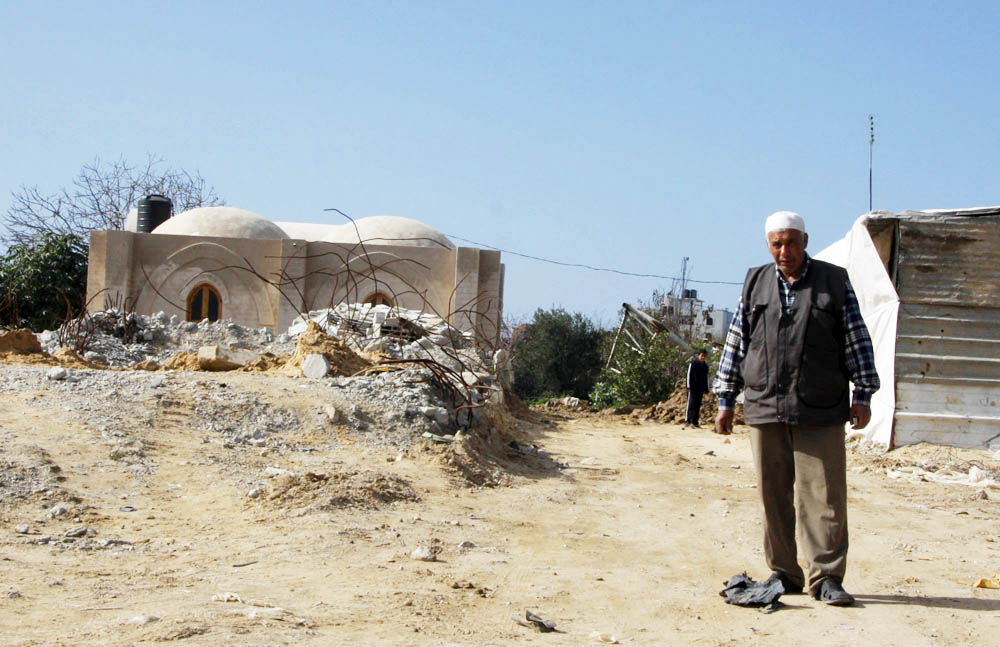The two-bedroom house in the Ezbet Abed Rabbo neighbourhood of Jabaliya town, north of Gaza City, is an improvement on the tent in which they had been living - next to the rubble of their former home.
Rebuilding homes damaged in last year’s 23-day war, has been almost impossible because Israel does not allow construction materials such as cement and steel into the Strip, saying they could be used for military purposes.
“I can’t forget how hard the past year has been for me and my family living in a tent in the cold winter and the hot summer,” al-Err told IRIN. “Of course a mud house is much better than a tent, although it’s not a real solution because I can’t build another flat on top of it for my two married sons who live in a rented house in Jabaliya town.”
Al-Err’s previous home in al-Salam neighbourhood, eastern Jabaliya, was one of 4,036 houses in Gaza which were totally destroyed or beyond repair, according to an April 2009 UNRWA and UN Development Programme assessment.
“The UN hopes to build around 120 mud brick houses for dozens of homeless families in the next few months in the Strip. Each house costs about US$10,000 and takes three months to build,” said Adnan Abu Hasna’a, an UNRWA spokesman.
While these houses were not a long-term solution for homeless families, he said, they offered better conditions than tents or partially destroyed buildings. They also provided employment for people UNRWA is training to make mud bricks and homes.
A dash of cement
Cement makes up 3 percent of each mud brick, to ensure enough strength, while keeping costs down, officials working on the project said.
International donors pledged US$4.5 billion in aid for the Palestinian Authority, much of it specifically for Gaza, at a conference in Egypt in March 2009, but little has made its way to the Strip because of the continuing blockade and bitter Palestinian divisions between political parties Hamas and Fatah.
“People in Gaza are determined to overcome all hardships and to challenge the Israeli siege imposed on the Strip,” Yousef al-Mansi, Hamas housing minister, said.
sk/ed/cb
This article was produced by IRIN News while it was part of the United Nations Office for the Coordination of Humanitarian Affairs. Please send queries on copyright or liability to the UN. For more information: https://shop.un.org/rights-permissions




